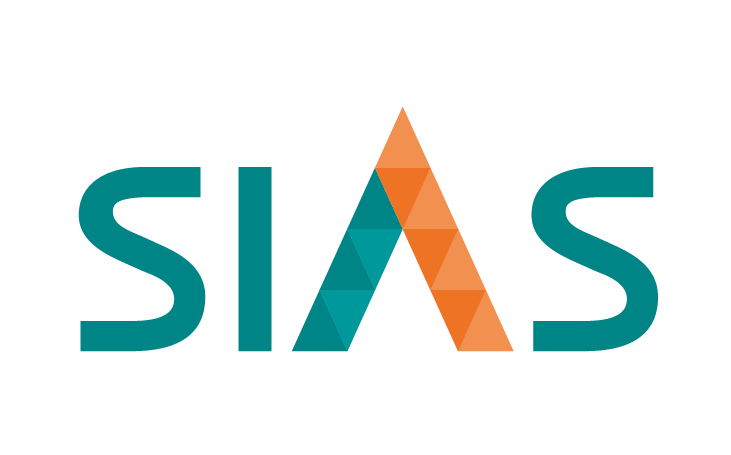Date: October 6, 2025

- DBS jumped 5.1% to new high of S$52.86
- STI rose all five days, gained 3.4% at a new record of 4,411.95
- On wall St, the S&P 500 and Dow also closed at new highs
- DBS has gained S$26b in market cap in 2025, widening lead over OCBC
- More upside for STI: analysts
- Despite Optus problems, analysts still positive on Singtel
- Cordlife’s shares sank after news of potential one-year suspension
DBS surged 5.1%, pushing the STI up 3.4% to record high
New all-time highs for DBS meant new all-time highs for the Straits Times Index last week, with the index gaining 146 points or 3.4% at 4,411.95.
Underpinning sentiment was a firm Wall Street where players appear to have taken the latest US government shutdown in their stride, with the Dow Jones Industrial Average and S&P 500 finishing the week at new record highs.
Average daily volume traded here was S$1.79b versus S$1.4b the previous week. DBS led the charge, rising S$2.57 or 5.1% to a new closing record of S$52.86.
US stocks rose to new highs as well
Wall Street on Friday advanced more than 1% for the week, with the benchmark S&P 500 index hitting 6,700 points for the first time ever, as traders shrugged off concerns over the U.S. government shutdown and its effect on economic data.
The shutdown came into effect at midnight on Wednesday after Republicans and Democrats failed to reach a federal funding deal. Treasury Secretary Scott Bessent on Thursday told CNBC that US GDP growth could take a hit from the shutdown. But market participants appeared to be unfazed, and historical data shows that stocks largely take shutdowns in stride.
One of the biggest casualties of the shutdown was the much-anticipated nonfarm payrolls report due Friday, which got cancelled after the U.S. Bureau of Labor Statistics was left with just one employee.
Meanwhile, the AI trade continued to grab eyeballs. OpenAI this week wrapped up a secondary stock sale that valued the ChatGPT developer at $500B, becoming the world’s biggest startup after surpassing Elon Musk’s SpaceX.
For the week, the S&P 500 index climbed 1.1%, while the blue-chip Dow Jones Industrial Average also added 1.1%. The tech-heavy Nasdaq Composite gained +1.3%.
DBS gained S$26 billion in value, this year, widening lead over OCBC
Over the weekend, Bloomberg reported that DBS’s blistering share rally this year has widened its market value lead over its peer OCBC to a level never seen before.
“A 21% advance in shares of Singapore’s largest bank in 2025 has boosted its market capitalisation by about S$26 billion, taking its gap over the second-largest lender in the Republic to S$75 billion. Analysts are mostly bullish on DBS’ dividend and wealth management outlook’’ said Bloomberg.
DBS is more efficiently run versus its peers and has more of a focus to reward shareholders, said Tareck Horchani, head of prime brokerage dealing at Maybank Securities in Singapore.
“As importantly, in segments such as wealth management, transaction banking, cash management, and AI-deployment, they have scale and dominate the verticals versus their competitors. This should keep their valuation premium,” he added.
More upside for the STI can be expected: analysts
JPMorgan analysts Khoi Vu and Rajiv Batra revised their 12-month STI bull target to 6,000 thanks to the Government’s initiatives to transform and revive the stock market. Their base target for the index was updated to 4,500, according to their Sep 21 report.
“Although this transformation may require time, the anticipated reforms hold out the promise of narrowing Singapore’s market valuation gap with its regional counterparts,” they said.
The analysts believe this could drive the market return on equity (ROE) to close to the average of 12% seen in 2012 to 2013, bringing the price-to-book (P/B) valuation back to the highs of 1.9 to two times, and the STI to their 6,000 “blue sky” projection and beyond.
Meanwhile, Chua Jen-Ai, equity research analyst for Asia at Julius Baer, set her target for the STI at 4,500.
“Our target excludes dividends, which should bring potential total return to over 10 per cent when factored in,” she told The Business Times.
She noted that while large-cap stocks are not the main beneficiaries of the EQDP, they could still enjoy “positive spillover effects” from greater interest in Singapore – and should also be considered possible investment candidates for investors seeking to increase exposure to the market.
She drew parallels between Singapore’s recent efforts in market revitalisation and the reforms of Asia counterparts – such as Japan’s “P/B reform” in January 2023 and South Korea’s “Value-Up” programme in February 2024.
“The success of reforms in Japan suggests that such top-down initiatives can improve ROE and valuations for the market if well-executed, and we are positive that Singapore equities could enjoy a similar uplift,” she said in a Sep 24 note.
OCBC Investment Research and UOB Kay Hian analysts set their targets for the STI in a similar range as well, at 4,504 and 4,602, respectively.
Adrian Loh, head of equity research at UOB Kay Hian, said his top-down STI target was based on the research house’s forecast of 2026 earnings growth of 5% for the index’s stocks.
“At our new STI target, the index would trade at a forward price-to-earnings (P/E) multiple of 13.4 times, which we do not view as stretched for a Singapore market that is long on quality defensive names,” he said in his Sep 8 report. “If we impute a 10% premium to our P/E multiple, the STI could trade up to 4,877.”
Despite Optus problems, analysts still positive on Singtel
Analysts on Tuesday (Sep 30) maintained their “buy” call on Singtel despite the telco’s recent share price retreat, sparked by consecutive outages suffered by its Australia subsidiary Optus.
RHB assigned Singtel a target price of S$4.90, whilst Maybank slashed its target price from S$4.75 to S$4.62, which was still above Singtel’s price at the time.
This comes as Optus, the second-largest telco in Australia, suffered an outage on Sep 28 that affected 4,500 customers, following a similar incident on 18 Sep that led to three deaths, and a government probe into the botched network upgrade that caused it.
RHB said that the recent retreat of Singtel shares signals a “good opportunity” for accumulation.
“While a series of recurring network incidents at Optus should weigh on near-term stock sentiment, the sell-down represents a good buying opportunity,” said the research house, noting that Singtel’s market capitalisation had fallen by around 7% since the Sep 18 outage.
Maybank analyst Hussaini Saifee remarked that even though Optus’ recent snags may pose “heightened near-term financial risks”, the impact on Singtel shares would likely be contained.
He pointed to Singtel’s diversification, with Optus accounting for 3 to 5% of the group’s earnings and 15% of its sum-of-the-parts valuation, based on Maybank’s estimates. “Additionally, (Singtel’s) ongoing S$2 billion share buyback programme supports valuation stability. These factors collectively suggest a low likelihood of a significant share price decline.”
Cordlife’s shares sink after news of potential one-year suspension
Shares of Cordlife Group crashed when they resumed trading on Oct 2, a day after the cord blood bank announced that it had received a notice from the Ministry of Health (MOH) stating its intention to suspend the company’s cord banking license for one year.
In a filing late on Oct 1, Cordlife said it is seeking advice but warned that if the suspension proceeds, its ability to continue as a going concern may be at risk. It cited ongoing operating expenses, potential refunds, customer payment uncertainty, and possible fines or legal claims.
Cordlife shares closed down 17.2% or S$0.037 at S$0.178 cents on Oct 2, after falling as much as 18.1%. They ended the week at S$0.178.
The latest suspension comes as a result of multiple regulatory non-compliances uncovered during MOH inspections in July at which the ministry found regulatory lapses across key operational areas, including quality management, risk assessment, incident reporting, supplier oversight, and documentation controls.
The ministry has directed Cordlife to replace its clinical governance officer, maintain all existing cord blood units (CBUs) stored with the company unless they are retrieved for clinical use or transfers, but only release them after the CBUs have been reviewed and assessed as suitable by a qualified haematologist.
In addition, Cordlife must retrospectively review all 160 CBUs collected since Jan 14, disclose any non-conformances to affected mothers, and implement remedial action.
The company has two weeks to respond to MOH.
Cordlife was first suspended for six months in November 2023, when MOH checks confirmed lapses in the storage temperature of its CBUs. The company was allowed to resume operations from Sept 15, 2024.
Subscribe to Newsletter
Subscribe to SIAS Mailing List and get updates to all upcoming events and news
By clicking submit, you agree to our privacy statement, collection, use and/or disclosure of your personal data to the extent necessary to provide you with this service.




